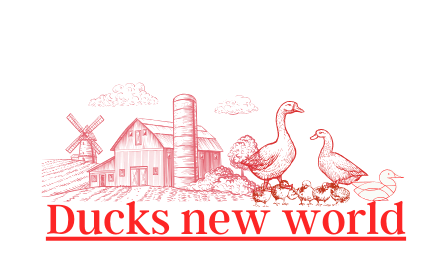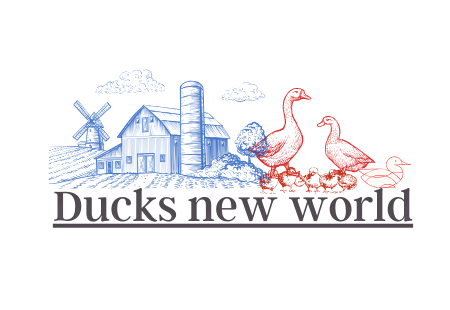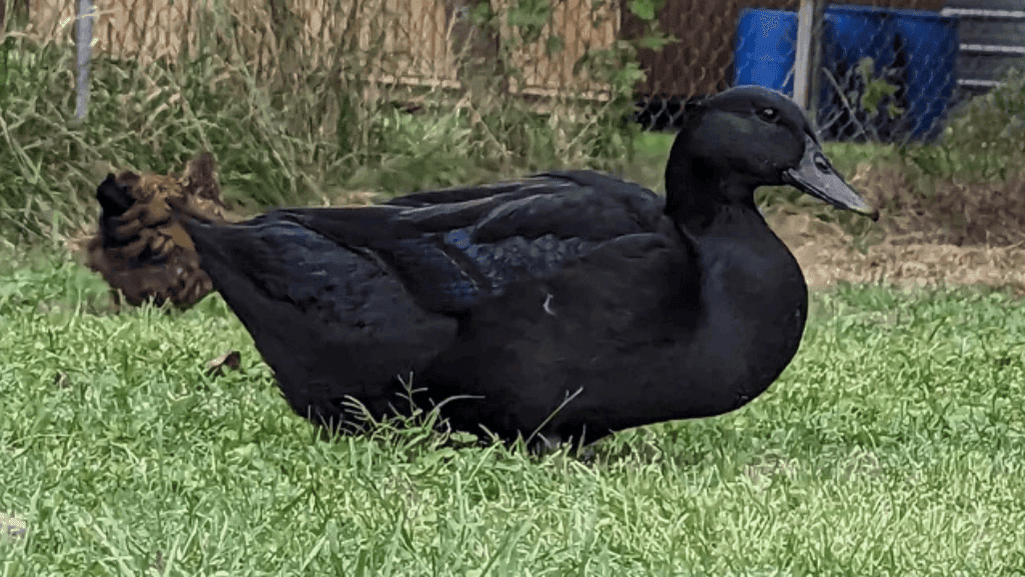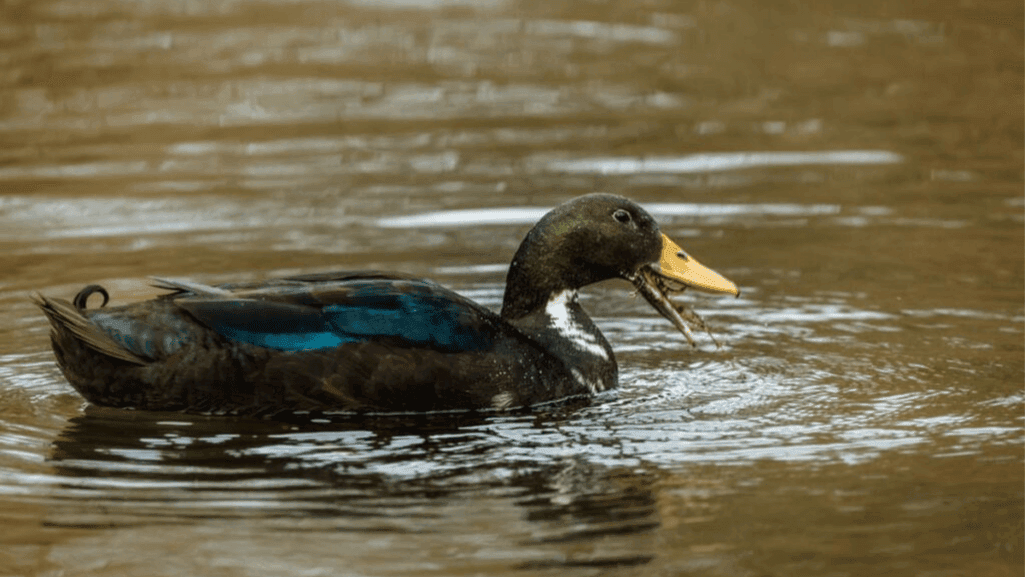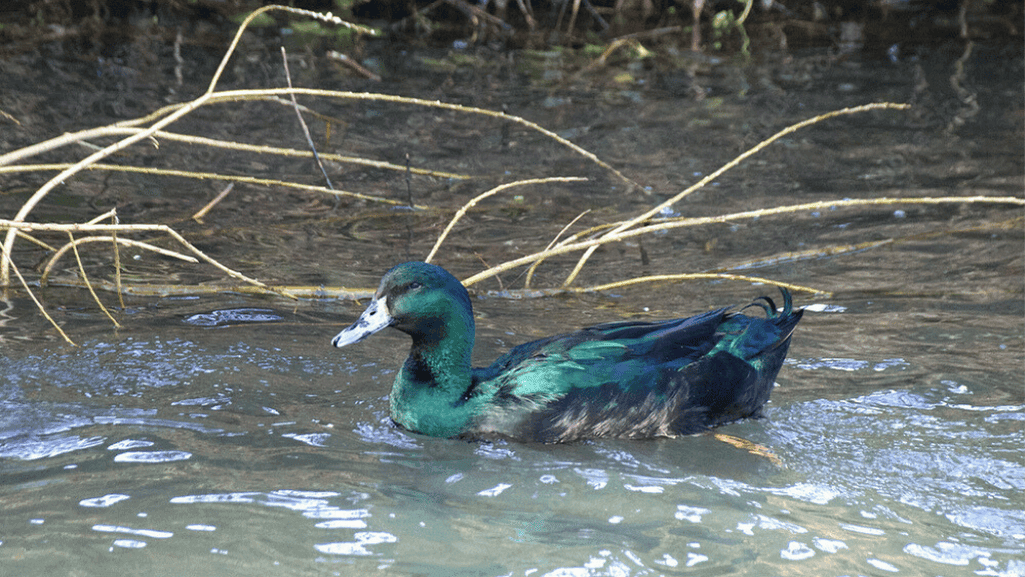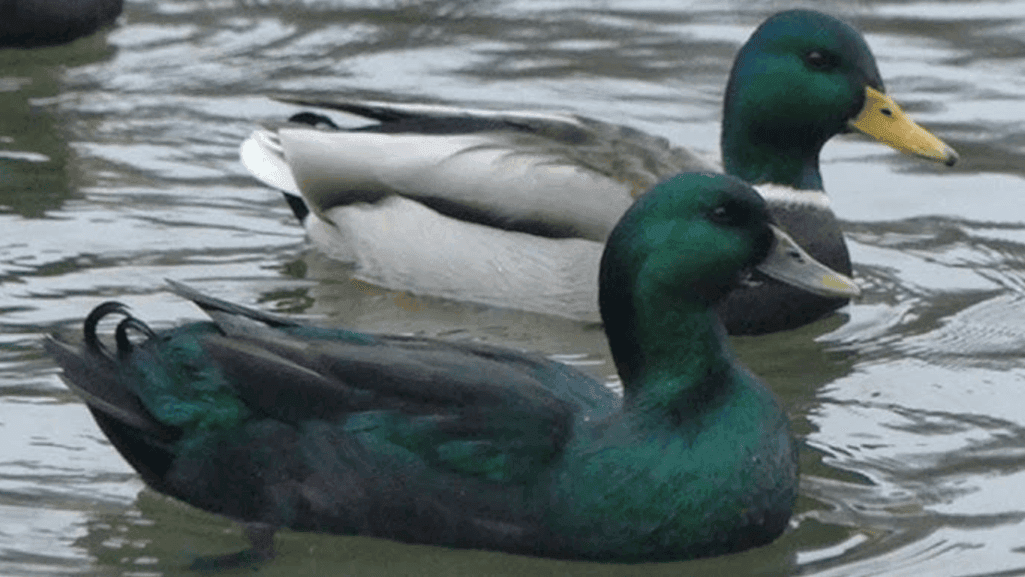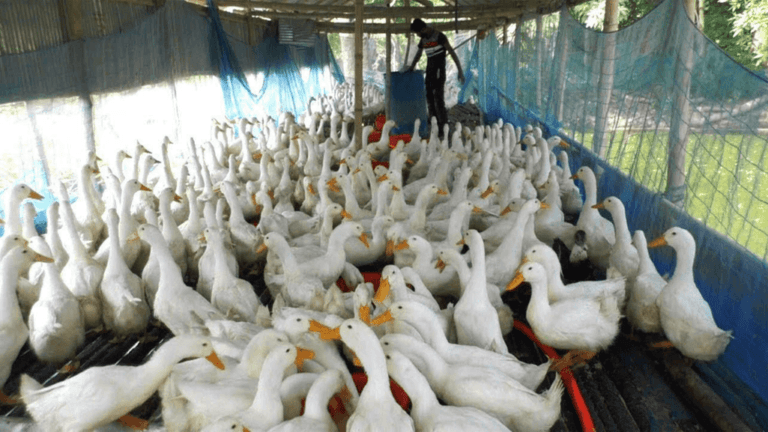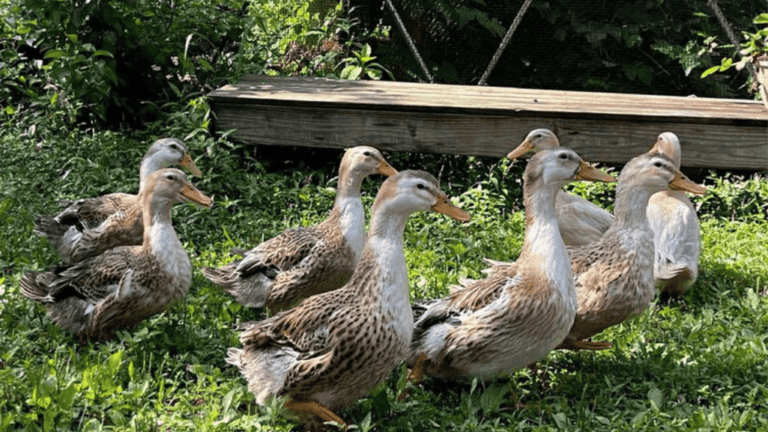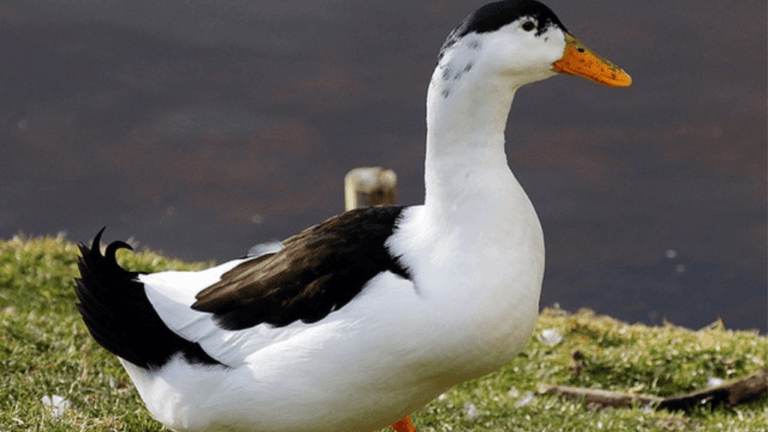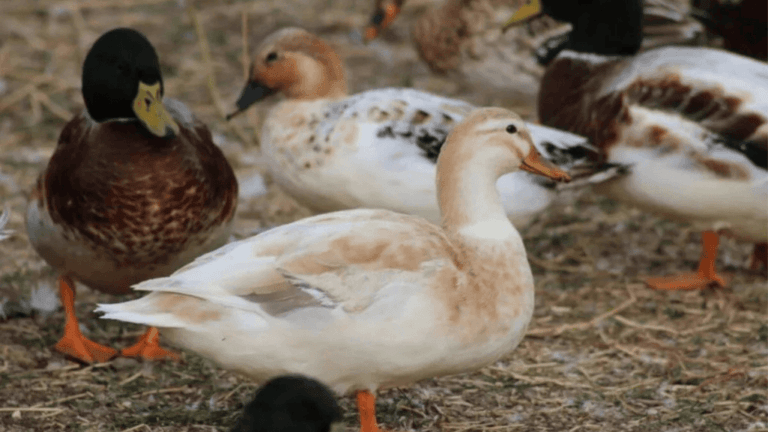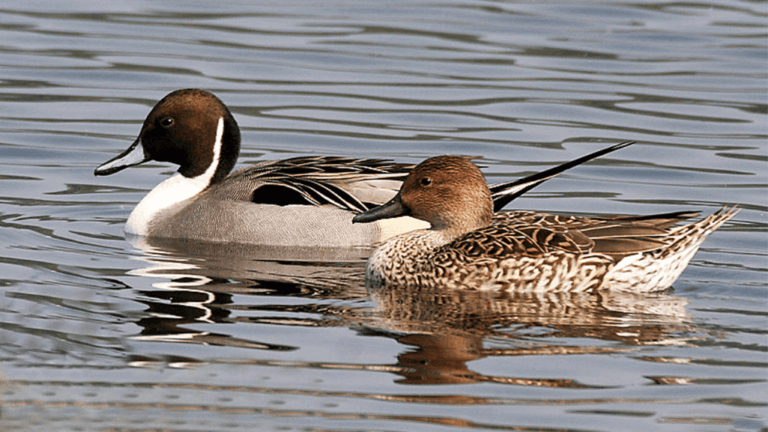Get ready to be amazed by the Cayuga ducks. Their iridescent plumage is truly stunning. These black beauties add elegance to any garden or pond.
Cayuga ducks come from the beautiful Finger Lakes region of New York. They are loved by many for their beauty and friendly nature. The American Poultry Association recognizes them as a special breed.
Cayuga ducks are unique among waterfowl. Their black feathers shimmer in the sun, creating a breathtaking sight. They are perfect for any backyard pond or aviary, becoming the main attraction.
Key Takeaways
- Cayuga ducks are renowned for their stunning iridescent black plumage
- They originate from the Finger Lakes region of New York
- Cayuga ducks are recognized by the American Poultry Association
- These waterfowl make excellent additions to garden ponds and landscapes
- Cayuga ducks have a gentle and amiable temperament
- They are a standout breed among ornamental poultry enthusiasts
Introducing the Stunning Cayuga Duck
Get ready to be amazed by the Cayuga duck, a true treasure among heritage poultry breeds. As you explore duck farming, you’ll see that Cayuga ducks are special. They have a stunning look and unique traits that set them apart from other domestic duck varieties.
Cayuga ducks are medium-sized, with males weighing 7-8 pounds and females 5-6 pounds. Their most striking feature is their iridescent black feathers. These feathers shimmer with green and purple in sunlight. This dark, shiny plumage is not only beautiful but also doesn’t fade, keeping their regal look all their lives.
As a heritage breed, Cayuga ducks have won the hearts of many. The Livestock Conservancy calls them “Watch,” showing how important they are to save for the future. Even though they’re less popular than the American Pekin duck, hobbyists and backyard keepers love them for their special qualities.
Cayuga ducks are also great for duck farming. They lay 100-150 large eggs a year. Their eggs start black, then turn gray and white as they lay more. These eggs are good for eating and baking, making Cayuga ducks a great choice for any farm.
Cayuga ducks are calm and friendly, making them perfect for any farm size or setting. They’re from New York and can handle cold winters well. Whether you’re experienced in duck farming or new to heritage poultry, the Cayuga duck will win your heart. It will add beauty and charm to your flock.
Origins and History of Cayuga Ducks
The Cayuga duck is known for its stunning iridescent black feathers. It comes from the Finger Lakes Region in upstate New York. Breeders started working on this breed in the mid-1800s, around 1840.
They chose wild Black Ducks to create a beautiful and strong duck. This effort led to the Cayuga duck we know today.
Development in the Finger Lakes Region
The Cayuga duck’s story started in the Cayuga Lake area. Breeders there worked hard to perfect the breed’s look and personality. They wanted a duck that was not only beautiful but also friendly and good at laying eggs.
As time went on, more people wanted Cayuga ducks. They were great for both looks and practical use. Now, Cayuga ducks are among the most popular duck breeds, loved by many worldwide.
Recognition by the American Poultry Association
The Cayuga duck’s official recognition was a big deal. In 1874, the American Poultry Association (APA) recognized the breed. They added it to their Standard of Perfection.
This made the Cayuga duck a true heritage breed. It encouraged breeders to keep the breed’s quality high and to help save it.
Since then, Cayuga ducks have won the hearts of many. They are loved for their beauty, toughness, and egg-laying skills. Cayuga ducks can lay up to 180 large eggs a year, making them a favorite among farmers and backyard keepers.
As we learn more about Cayuga ducks, we must honor their history and the breeders who saved them. By celebrating their origins, we make sure future generations can enjoy these amazing black ducks.
Physical Characteristics of Cayuga Ducks
Cayuga ducks are truly eye-catching, with their unique look and features. They are medium-sized and known for their shiny, iridescent feathers. These ducks stand out because of their special appearance.
Iridescent Black Plumage
The most striking thing about Cayuga ducks is their black feathers. These feathers shimmer with green and purple when sunlight hits them. It’s a beautiful sight that makes them a favorite in any group or garden.
Their black feathers cover their whole body. This gives them a sleek and elegant look that grabs attention.
Size and Weight
Cayuga ducks are medium-sized. Males weigh between 6.5 and 8 pounds, and females weigh between 6 and 7.5 pounds. This size is great for both meat and eggs, and they look good in any backyard or collection.
Bill and Leg Color
Cayuga ducks also have black bills and legs that are either black or dark gray. This color matches their feathers perfectly. It makes them look even more beautiful.
In short, Cayuga ducks are special because of their shiny feathers, medium size, and dark features. They are a favorite among poultry lovers and those who want to add elegance to their collection.
Personality and Temperament
Cayuga ducks are a wonderful addition to any backyard flock. They are calm and friendly, perfect for both new and experienced bird keepers. These ducks love to explore and enjoy free-range areas safely.
What makes Cayuga ducks special is how quiet they are. This is great for people living in cities or suburbs where noise is a concern. The males, or drakes, are especially quiet, adding to their charm.
Cayuga ducks are also very hardy and can adapt to different climates. They are cold-resistant and can thrive in many places. Plus, they are broody, meaning they love to sit on eggs and help them hatch, with a success rate of 50 to 70 percent.
When it comes to their personality, Cayuga ducks are easy-going and sociable. They bond well with their owners and get along with other birds. Adding Cayuga ducks to your backyard will bring beauty and a wonderful personality to your space.
Cayuga Ducks as Ornamental Poultry
The Cayuga duck’s striking appearance, with its iridescent beetle-green-black plumage, makes it a popular choice among ornamental poultry enthusiasts. These majestic waterfowl breeds can bring a touch of elegance and beauty to any garden pond or landscape.
Cayuga ducks are mainly kept for their beauty in the 21st century. Their glossy feathers reflect light in a mesmerizing way. This creates a stunning visual display that can elevate the aesthetic appeal of any outdoor space.
Enhancing Garden Ponds and Landscapes
Adding Cayuga ducks to a garden pond or landscaped area can create a picturesque scene. Their dark plumage provides a striking contrast against the vibrant green foliage and the shimmering blue water. This makes them a focal point of any outdoor environment.
Cayuga ducks are not only visually appealing but also relatively low-maintenance. They are hardy birds that can adapt well to various climates. However, they may require protection from extreme weather conditions. With proper care and a suitable habitat, these ornamental poultry can thrive and bring joy to their keepers for years to come.
Compatibility with Other Waterfowl
Cayuga ducks are known for their calm and friendly disposition. This makes them an excellent choice for mixed flocks. They can coexist peacefully with other waterfowl breeds, such as Pekin ducks, Muscovy ducks, and even geese.
Integrating Cayuga ducks into a diverse collection of ornamental poultry can create a visually stunning and harmonious environment. The combination of different colors, sizes, and shapes among the various waterfowl breeds can result in a captivating display. This is sure to impress visitors and passersby.
Whether kept in a dedicated duck pond or as part of a larger ornamental poultry collection, Cayuga ducks are sure to add a touch of sophistication and beauty to any setting. Their unique appearance and compatible nature make them a valuable addition to any enthusiast’s flock.
Cayuga Duck Care and Management
Caring for Cayuga ducks is rewarding and requires dedication. These birds are beautiful, hardy, and adaptable. They are great for both new and experienced duck farmers. With the right care, Cayuga ducks can do well in many settings, from small backyards to large farms.
Housing and Shelter Requirements
Cayuga ducks are tough because of their feathers and fat. But, they still need a safe, clean place to live. Here’s what to consider when building a duck house:
- Give each duck at least 4 square feet of space
- Make sure there’s good air flow to keep air fresh and prevent dampness
- Have a secure area for them to go outside
- Provide a shallow pool for swimming and cleaning
For tips on building the best home for your Cayuga ducks, check out Insteading’s guide.
Feeding and Nutrition
It’s important to feed Cayuga ducks well. They need a high-quality duck feed with proteins, carbs, vitamins, and minerals. Add fresh greens and insects like mealworms as treats. Remember, ducks need niacin, which is in duck feed or brewer’s yeast.
Ducklings grow fast. Cayuga ducks start laying eggs at five months and can hatch ducklings at eight. Make sure they get a starter feed made for ducklings during this time.
Health Concerns and Preventive Measures
Keeping your Cayuga ducks healthy is key. Regular vet visits and preventive steps like vaccinations and parasite control are important. Watch out for problems like:
- Bumblefoot: a bacterial infection that causes swelling and abscesses on the feet
- Duck virus enteritis: a contagious viral disease that affects the digestive system
- Aspergillosis: a fungal infection that can be deadly if not treated
By being informed and proactive, you can keep your ducks healthy and productive. For more advice on duck health, visit Ducks New World.
Breeding and Reproduction
Cayuga ducks are a treasured heritage poultry breed. They are known for laying lots of eggs and being great parents. These domestic duck varieties can lay between 100 to 150 eggs a year. They are reliable for small-scale farmers and duck lovers.
They are also very caring parents. They incubate their eggs and take care of their ducklings.
When breeding Cayuga ducks, picking healthy, mature birds is key. This ensures the breed’s integrity and unique traits. Proper incubation is crucial for successful hatching, taking about 28 days.
After hatching, a warm, safe place is vital for their growth. This helps them stay healthy.
To breed successfully, keep a drake with five to ten ducks. Lighter breeds can have a higher ratio, while heavier breeds need a lower one. Ducks mate in late winter to early summer, showing behaviors like head bobbing and neck biting.
A single Cayuga duck can have about 100 marketable ducklings a season. This number can vary. As a Slow Food USA Ark of Taste breed, Cayuga ducks are valued for their looks and genetic diversity.
Cayuga Ducks in the Poultry Industry
Cayuga ducks are not just for show; they’re also valuable in the poultry world. Their striking looks and unique qualities make them great for small-scale farming. They provide tasty meat and eggs, a healthier choice than regular poultry.
Meat and Egg Production
Cayuga ducks may be small, but they offer a special taste experience. Hens grow to 4-5 pounds, while males reach 7-8 pounds. Their meat is flavorful and lean, similar to Pekin duck.
These ducks lay 130-180 eggs a year, averaging 160. Their eggs are great for eating and baking. At first, their eggs are black, then turn lighter, ending as bright white. This makes their eggs a fun find.
Niche Markets for Heritage Breeds
Heritage breeds like Cayuga ducks are in high demand. People love their unique taste, looks, and history. Duck farmers and heritage breed lovers are especially interested in Cayuga ducks.
Their appeal comes from their flavor, appearance, and role in saving a rare breed. Those who value genetic diversity and traditional farming choose Cayuga ducks.
By raising Cayuga ducks, farmers help protect this special breed. This growing interest supports sustainable farming and preserves genetic diversity.
As heritage poultry gains popularity, Cayuga ducks will become more important. They offer a unique, high-quality, and ethically raised option for poultry lovers.
Cayuga Ducks as Pets
Cayuga ducks are a unique and charming addition to any backyard. They are calm, friendly, and bond closely with their owners. These ducks are smart and enjoy human interaction, becoming attached to their caretakers.
Understanding Cayuga ducks’ needs is key when considering them as pets. They don’t need a pond but do need a safe place to roost, enough space to eat, and clean water for bathing. Their quiet nature and limited flying make them perfect for small backyards and gardens.
Bonding with Owners
Keeping Cayuga ducks as pets is rewarding due to their strong bond with owners. They are quiet, docile, and intelligent. Raised young, they can be hand-fed and recognize their caretakers. Spend time with them daily, offering treats and a safe environment to strengthen your bond.
Integrating with Backyard Flocks
Introducing Cayuga ducks to your backyard flock needs careful planning. They are generally friendly with other waterfowl and chickens. However, watch their interactions closely to prevent conflicts.
Start by giving them their own space to get used to their new home. Then, introduce them to the rest of the flock during supervised outings. This way, everyone has space to retreat if needed. For more information, check out this guide on Cayuga ducks.
By giving your Cayuga ducks a loving home and proper care, you’ll enjoy their companionship. They bring joy and companionship to your life.
Conservation Efforts for Cayuga Ducks
The Cayuga duck is a treasured heritage poultry breed. It faces challenges in keeping its numbers up. The American Livestock Breeds Conservancy (ALBC) says there are fewer than 1,000 breeding birds in the U.S. Breeders and enthusiasts are working hard to save these majestic black beauties.
Groups like the Livestock Conservancy are key in saving Cayuga ducks. They raise awareness, offer resources, and connect breeders. This helps ensure Cayuga ducks are around for future generations.
Supporting conservation efforts is vital for Cayuga ducks’ survival. Raising Cayuga ducks or buying from dedicated breeders helps. We must protect these magnificent creatures for years to come.
The Cayuga duck is hardy, adaptable, and has a unique look. It’s a great addition to any heritage poultry collection or backyard flock. By working together, we can keep the Cayuga duck a cherished part of our heritage. Visit Ducks New World to learn how to support Cayuga ducks and other waterfowl breeds.
